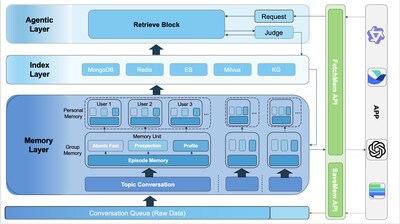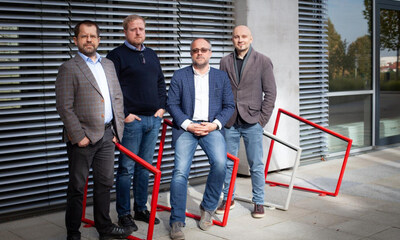Report: The Rise of AI Threatens to Explode US Electricity Demand and Overburden the Grid–but Also Promises New Efficiencies
Press Releases
Jun 13, 2024
NEW YORK, June 13, 2024 /PRNewswire/ — Amid rising demand for data centers and computing power for artificial intelligence (AI), cloud storage, and crypto assets, analysts are predicting a significant rise in electricity demand, potentially overloading the US grid.
A new report from The Conference Board, Smart Power: Will AI Spike Electricity Demand or Reduce It Through Efficiencies?, analyzes the potential that the rise of AI will fuel a major increase in electricity demand. It provides in-depth analysis and strategic insights for managing the potential grid strain and harnessing AI efficiencies.
“The rise of AI and data centers presents both opportunities and challenges for the energy sector,” said Alex Heil, Senior Economist at The Conference Board. “While AI can drive efficiencies in electricity use, the increased demand from data centers could strain our existing infrastructure. It’s crucial for businesses to manage their power demand and for policymakers to address grid constraints to ensure a reliable, sustainable energy future.”
Among the report’s key insights:
Power demand from data centers is projected to significantly increase.
- Analysts project that power demand from data centers could more than double over the next decade.
- This increase is expected to place significant pressure on the existing electricity grid, potentially creating outages and reliability issues.
- The expansion of data centers—and some $500 billion of investment in industrial and manufacturing facilities since 2021—has already substantially upgraded forecasts for overall US power usage.
- Nationwide, electricity demand is now expected to grow 4.7% over the next 5 years—nearly double the previous forecast for 2.6% growth.
Despite previous predictions, dramatic increases in energy demand did not materialize as expected.
- The past two decades have seen relatively stagnant electricity demand, despite corresponding with dramatic increases in smartphone and internet usage.
- In 2007, the EPA estimated that energy consumption in the US by data centers and related technologies would double between 2005 and 2010, but the actual increase was only 36%.
- Advances in energy efficiency, such as LED lighting and improvements in technology, combined with the decline in demand due to the 2008-2009 recession, helped mitigate the predicted spikes in energy demand.
AI will seriously tax utilities and the grid in the decade ahead—but also has the potential to unlock significant efficiencies in electricity use.
- Current-generation AI models like ChatGPT now use over 500,000 kWh per day to operate—compared to 29 kWh for the average US household.
- AI’s computational power is projected to double every 100 days, increasing global energy demand attributed to AI by 26% to 36% annually in the coming years.
- Implementing AI to manage electricity usage—for instance, by shifting the most taxing tasks to off-peak hours—can result in efficiency savings, reducing costs and enhancing the capacity of energy systems.
- If the added computational power of AI allows businesses to achieve greater efficiencies and utilities to operate more effectively when managing their own operations, then the increase in power demand due to AI could be lower than projected—as happened with the rise of smartphones and the internet in the 2000s and 2010s—and support climate goals.
The US energy grid and water resources face significant challenges due to increased demand.
- There are more than 8,000 data centers in operation globally, with approximately one-third located in the US, driving significant demand for water and critical infrastructure components.
- On average, data centers are estimated to use between 1 million and 5 million gallons of water per day, equivalent to the daily demand of 10,000 to 50,000 residents.
- Long-term planning is critical, and the Federal Regulatory Energy Commission’s Order No. 1920 now requires transmission operators to plan for future demand, addressing capacity needs over the next 20 years.
- A shortage of transformers, a critical component of grid infrastructure, continues to create constraints within US energy markets, exacerbated by the increased demand from data centers and AI technologies.
About The Conference Board
The Conference Board is the member-driven think tank that delivers Trusted Insights for What’s Ahead™. Founded in 1916, we are a non-partisan, not-for-profit entity holding 501 (c)(3) tax-exempt status in the United States. ConferenceBoard.org
![]() View original content to download multimedia:https://www.prnewswire.com/news-releases/report-the-rise-of-ai-threatens-to-explode-us-electricity-demand-and-overburden-the-gridbut-also-promises-new-efficiencies-302172058.html
View original content to download multimedia:https://www.prnewswire.com/news-releases/report-the-rise-of-ai-threatens-to-explode-us-electricity-demand-and-overburden-the-gridbut-also-promises-new-efficiencies-302172058.html
SOURCE The Conference Board




